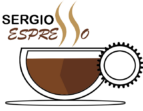A/B Testing for FAANG Interviews: Mastering User-Tied vs. Un-Tied Flights
This article equips product managers with the knowledge to ace their FAANG interviews by mastering A/B testing tactics, specifically focusing on the crucial decision of choosing between **user-tied and un-tied flights**.
Introduction
Acing your FAANG interview requires a deep understanding of A/B testing, particularly within the context of user experience platforms like Bing. This article delves into the nuances of choosing between user-tied and un-tied flights for A/B testing, highlighting the impact this choice can have on your interview and career.
Detailed Guide on Framework Application
Choosing a Framework
The A/B testing question is best tackled using the AARM (Always Be Running Multiple) Experiments framework, ideal for questions revolving around experimentation and iterative learning.
Applying the AARM Framework Step-by-Step
The AARM Framework consists of these steps:
- Analyze the testing environment: Understand Bing’s user segments, traffic patterns, and current CTR benchmarks.
- Articulate the hypotheses: Formulate that the new algorithm will increase CTR without sacrificing result relevance.
- Run the experiment: Choose a user-tied flight if testing personalized features requiring user history, or an un-tied flight for broader, universal changes.
- Measure the results: With statistical rigor, measure the new algorithm’s impact on CTR and compare it against any changes in user satisfaction or search relevance.
Hypothetical Example
Suppose Bing wants to test a new search algorithm designed to improve click-through rates (CTR). How do we proceed?
- Analyze the testing environment: Understand Bing’s user segments, traffic patterns, and current CTR benchmarks.
- Articulate the hypotheses: Formulate that the new algorithm will increase CTR without sacrificing result relevance.
- Run the experiment: Choose a user-tied flight if testing personalized features requiring user history, or an un-tied flight for broader, universal changes.
- Measure the results: With statistical rigor, measure the new algorithm’s impact on CTR and compare it against any changes in user satisfaction or search relevance.
Comparing Benefits and Drawbacks
User-tied flights:
- Benefits: Consistent user experience during the test, capacity to evaluate long-term user behavior.
- Drawbacks: Slower to show significant results due to limited user pool (often active or logged-in users).
Un-tied flights:
- Benefits: Quicker indications of impact across a diverse audience.
- Drawbacks: Potential inconsistency in user experience, exclusion of personalization factors affecting experiment reliability.
Fact-Checking and Approximations
While you may not have access to Bing’s exact traffic data, discuss how you’d use industry-standard percentages (e.g., a 95% confidence level) to determine the validity of your results.
Effective Communication Tips
- Be succinct and logical in your explanations.
- Use data-driven language.
- Explain complex concepts in layman’s terms.
- Clarify that while you may not have all the answers, you understand the strategic approach to experimentation.
Conclusion
Understanding the intricacies of A/B testing frameworks like AARM and when to apply different types of flights is critical for any aspiring or seasoned product manager. Use these frameworks to create structured, thoughtful responses during your interviews. Engage with these concepts regularly and always stay curious about the impact of your decisions on user experience.
